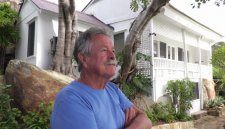For me in architecture nature has a beautiful story. You look at the strength of our flora but also look at the delicacy at the same time. So there’s a strength and a delicacy. I love the idea of the legibility of the strength. I love the delicacy of the edges. And so in my work, I like to articulate that which is structure, that which is skin, that which is edge. These are things that are in nature in this part of the world and I have endeavoured in my career to try and understand this landscape of ours and be able to integrate these elements not in a determined way but in a very relaxed way. So that there is the articulation of elements without it being such that you are forced to look at it. I don’t like an architecture that is saying to me, Look at me, look at me, look at me. I want an architecture that’s quiet, that reveals itself quietly, and the more you start to see it, the more you start to understand it.
The roots of architecture remain relevant. If you go beyond the roots of architecture, about space, about order, about structure, about understanding nature and structure … If you go and just do something for the sake of it, for example, you’ll hear students talking about, Oh I wanted to do this and I wanted to do that. That’s delinquent. What does the brief call for? What does the site call for? What does the economics call for? What does the structure call for, what are the materials available? These are the things – it’s not what I want. It’s what these things are asking to be addressed.
I am very happy at the age of over 80 now still practising like mad and still enjoying it as I did as a young architect.













